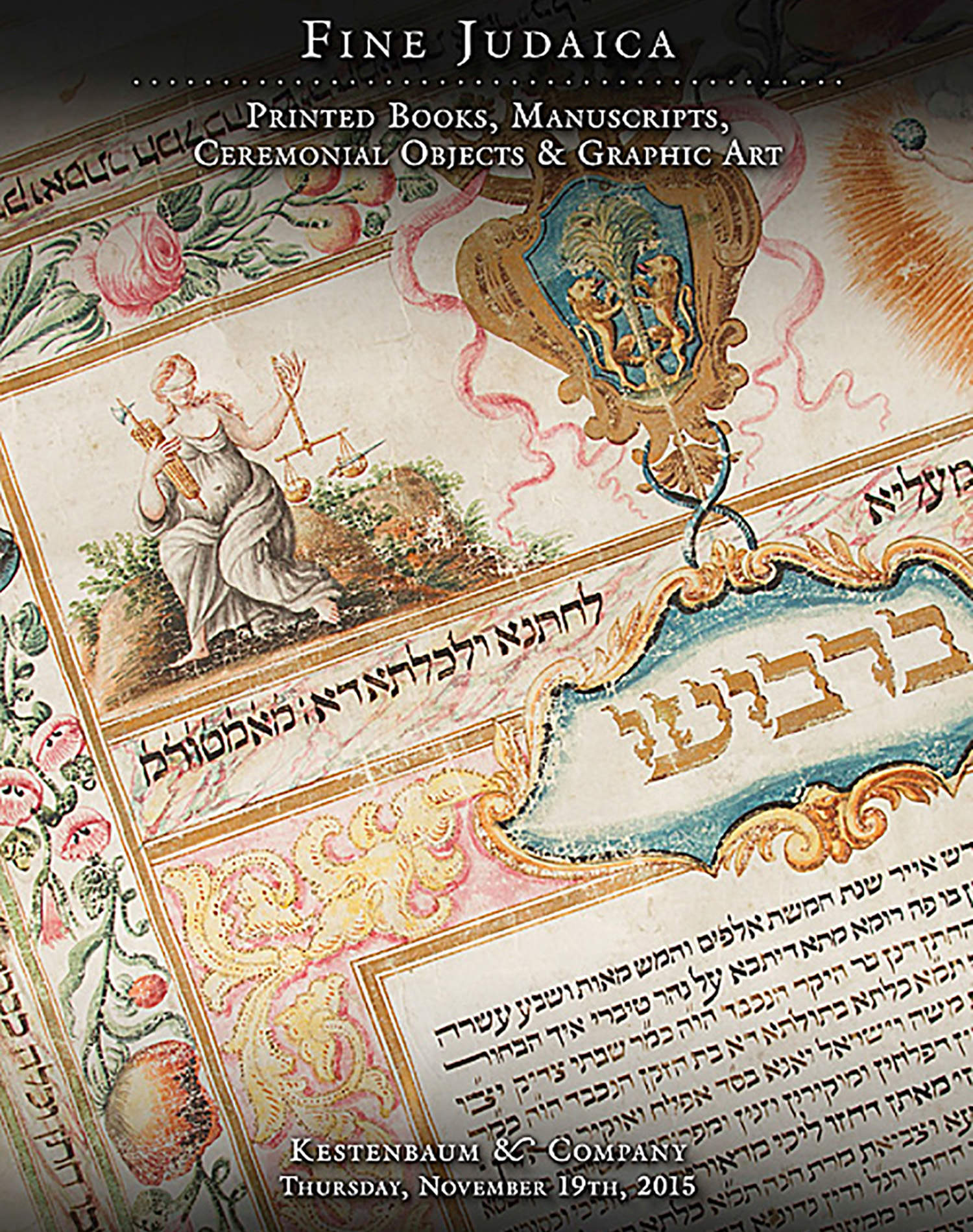Shulchan Aruch [Code of Jewish Law]. Yoreh Deah. With Commentary by Moses Isserles (ReM”A).

AUCTION 66 |
Thursday, November 19th,
2015 at 1:00
Fine Judaica: Printed Books, Manuscripts, Ceremonial Objects and Graphic Art
Lot 44
KARO, JOSEPH.
Shulchan Aruch [Code of Jewish Law]. Yoreh Deah. With Commentary by Moses Isserles (ReM”A).
Cracow: Isaac Prostitz 1578
Est: $10,000 - $15,000
PRICE REALIZED $16,000
The Rem”a is considered as the greatest Halachic authority and codifier in Poland. His contemporaries looked to him as the “Maimonides of Polish Jewry” in his methodical approach, manner of study, character and humility. These glosses to Karo’s Shulchan Aruch are also known as the”Mapah” - or, “Tablecoth” to Karo’s “Prepared Table.” It resulted in universal acceptance of the the Shulchan Aruch to both Aschkenazic and Sephardic Jews. The Rem”a’s contribution added supplements, explanations and Aschkenazic / Polish customs and practices pertaining to all walks of life, which were not included, or differed from the practices cited by Yoseph Karo. His rulings are considered binding on Aschkenazic Jews worldwide.
The first printed edition of the Rema’s glosses does not exhibit the earlier sources upon which the Rem’a based his comments, or if he is supplying his own opinion directly. <<Of striking interest>> is that in this particular volume, the shorter marginal notes and the notes written between the lines specifically indicates whether these sources are “Sevarath Harav (“the Rabbi’s opinion”) or Divrei Atzmo (“his own words.”).
For example, see f. 28b at the end of Siman 106 where the marginalia records “Divrei Atzmo,” whereas on f. 44b in the Rema’s glosses to Siman 170, the notes state twice “Sevarath Harav.” Later editions of the Shulchan Aruch that contain the commentary of the Rem’a do in fact contain printed notes precisely indicating these sources. These were added by an unknown editor - perhaps one who had access to this very volume.
The lengthier marginal notes here contain more detailed citations and scholarly discussions of the pertinent laws. These important marginalia were written in the early 17th century (ca. 1615) by a <<disciple of R. Mordechai Jaffe>> author of the Levush (see marginal note to end of Siman 402 citing “Mori Maharam Yaffa” (= Mordechai Jaffe). Apparently the writer was also a contemporary of the Rema’s brother-in-law <<R. Pinchas Halevi Horowitz>> , a great Talmudic scholar in his own right. See note on f. 74a. that states “Devarav kethuvim etzli…beshnath shin-ayin-he” (1615).
On f. 33b near Siman 123 the marginal note cites <<The Mahara’l of Prague>> “Hagaon…Leib MePrague bedrush shedarash…” In a different hand, on f. 87b, a marginal comment states that one scholar permitted whiskey made from “Chodosh” (the new crop of wheat before Passover) since it is only like sweat or just moisture but “I believe it to be prohibited.”
<<A rare volume with extensive contemporary manuscript novella.>>
